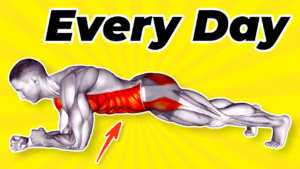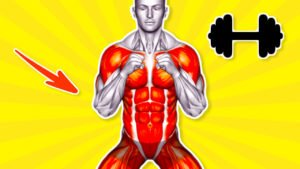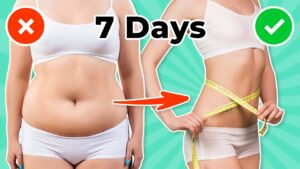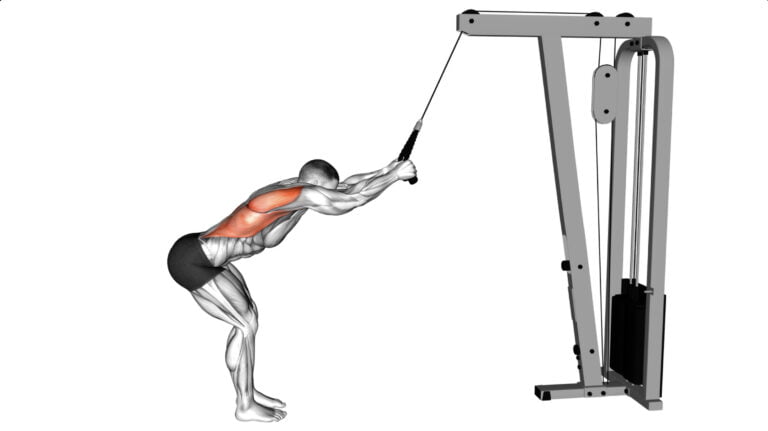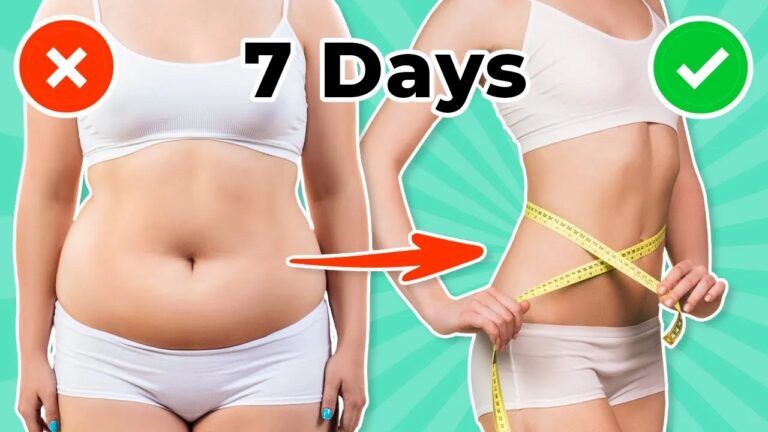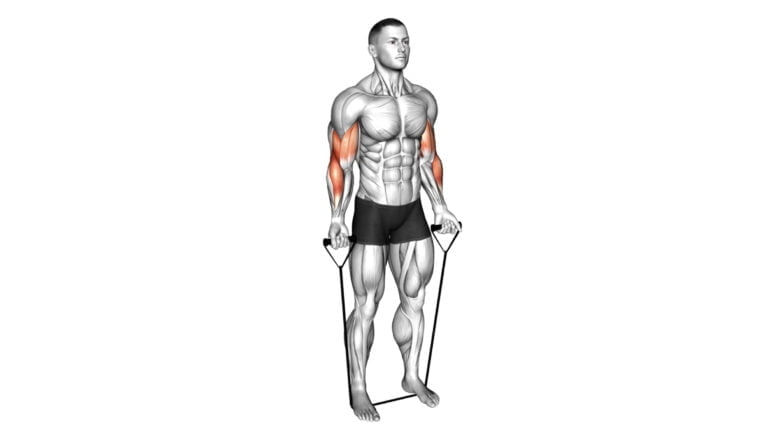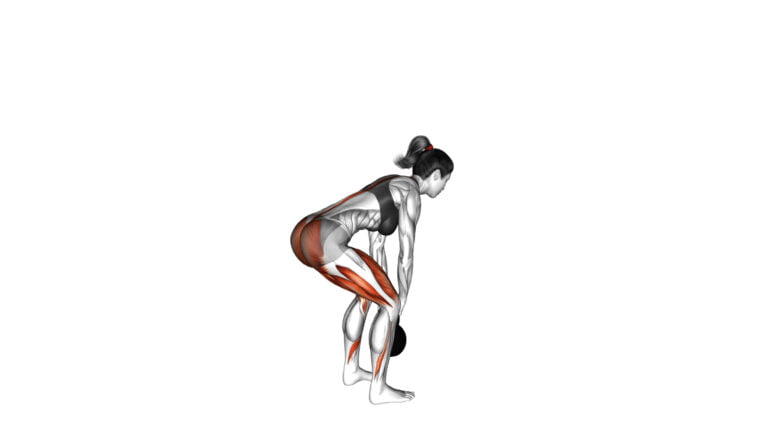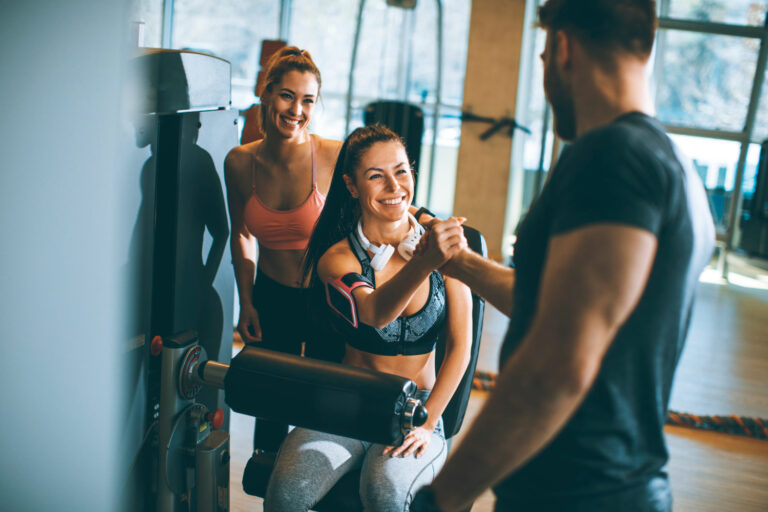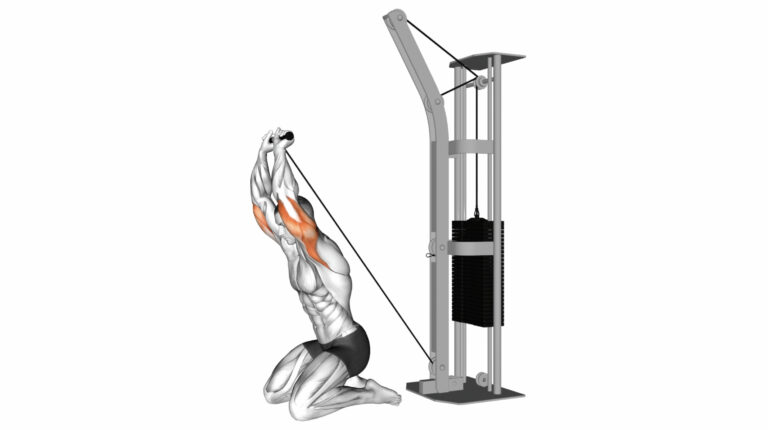Mastering The Push Up Workout For Beginners – A Step-by-Step Guide
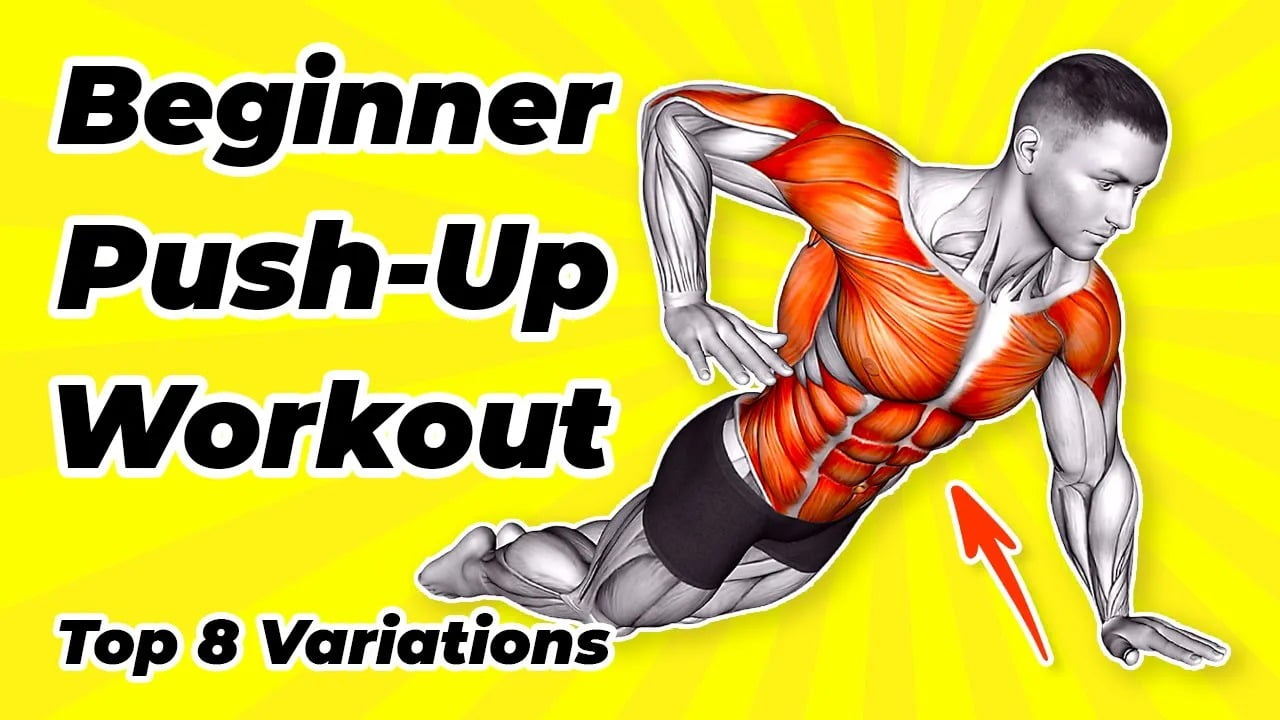
Watch The Video To See Push Up Workout At Home For Beginners In Action!
Having a visual guide can make all the difference when you’re getting started with push-ups. That’s why watching a beginner push-up workout video is so valuable. It shows you exactly how to position your hands and keep your back straight, taking out the guesswork.
Plus, seeing common mistakes in action helps you avoid them. The right video teaches everything from where to place your palms for stability to how far apart your feet should be for balance.
A well-designed beginner workout video will lead you through various push-up modifications, like kneeling or wall push-ups before moving on to regular ones. By following along with an expert trainer, you get real-time tips on form and pace as well as motivation to power through each rep.
Don’t just listen; watch closely as they demonstrate the exact moment when elbows bend and triceps engage or emphasize breathing techniques that could help improve endurance during your routine.
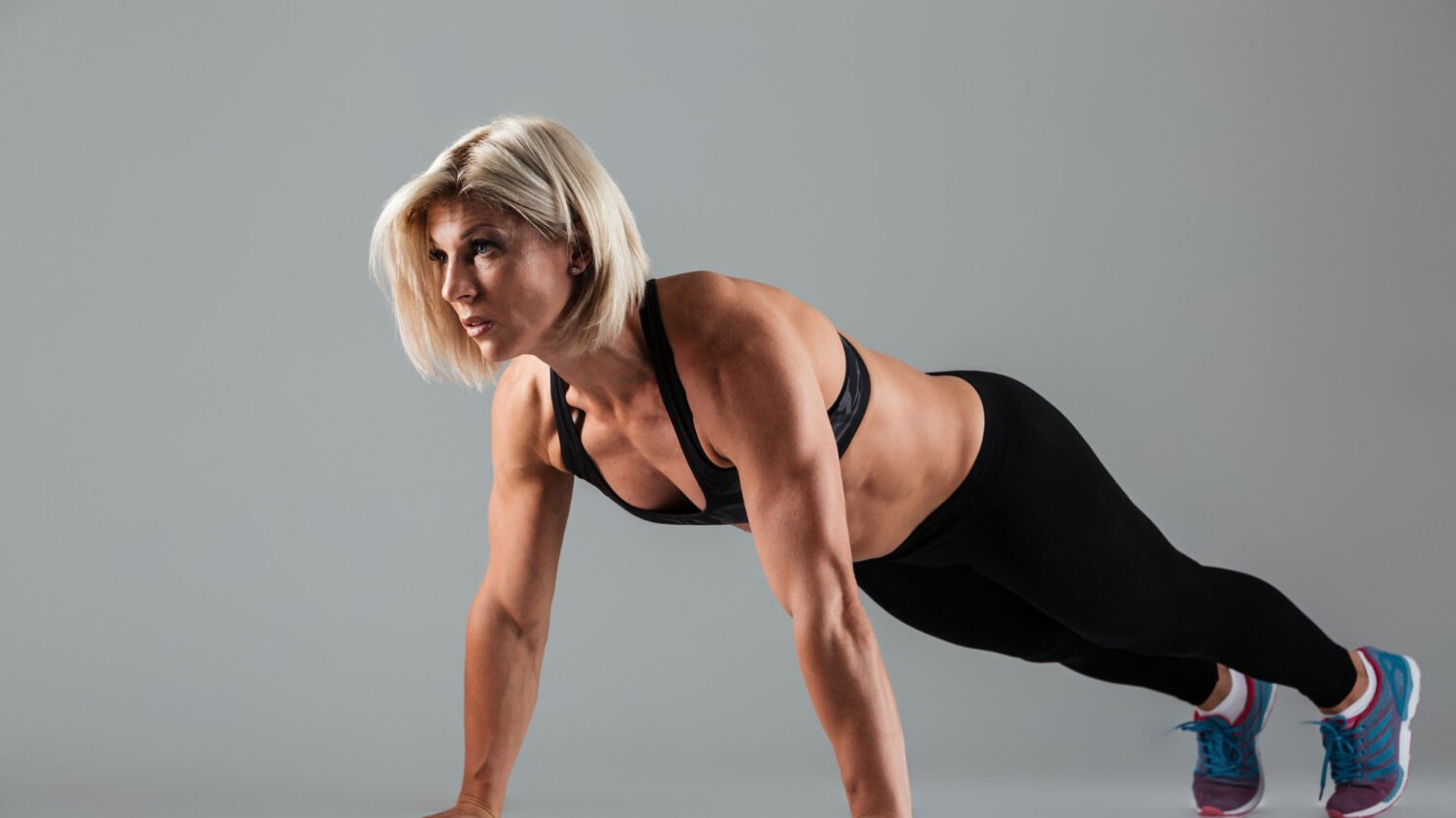
Just watched a video on beginner push up workouts and ready to dive in? The push-up, sometimes seen as a marker of fitness prowess, often evokes a sense of dread among novices. However, this fundamental exercise, when mastered, can transform your strength training routine and yield impressive health benefits.
With my years as a certified personal trainer and physiotherapist specializing in functional fitness, I’ve guided countless individuals through their first faltering reps to confident sets brimming with power.
Unlocking the potential of the humble push-up begins with understanding its mechanics and proper form—a knowledge many overlook but is critical for effectiveness and preventing injury.
As we embark on this journey from foundational techniques to advanced variations that’ll challenge even seasoned athletes, you’re about to discover how versatile and rewarding regular push-ups can be for your entire body.
Let’s get you pushing past limits!
Key Takeaways
- Watching beginner push – up videos before starting your workout is helpful because it shows proper hand placement, back alignment, and can prevent common mistakes.
- Begin with basic push-ups and increase volume over time; start including triceps-focused exercises like close-grip bench presses on Day 2 of your routine for improved strength.
- Mix up your workouts by adding variations such as kneeling push-ups or explosive push-ups to continually challenge different muscle groups and advance your skills.
- Emphasize the importance of maintaining correct body alignment, hand positioning, and breathing techniques to enhance the benefits of push-ups and reduce injury risk.
- Gradually progress through a one-month program designed for beginners that focuses on building endurance, form, pecs and deltoid strength leading to mastery of traditional push-ups.
The Basics of Push-Ups

Learn the step-by-step guide on how to do a push-up and the common mistakes to avoid. If you want to master the push-up workout, this section will give you all the essential information to get started.
Step-by-step guide on how to do a push-up
To begin a push-up, place your hands flat on the floor, slightly wider than shoulder-width apart. Your fingers should point forward, and your arms straight. Keep a strong plank position by engaging your core muscles; this means tightening your stomach as if you’re about to be punched.
Position your feet together or up to 12 inches apart for more stability.
Lower your body in one straight line towards the ground by bending at the elbows and leaning slightly forward so that they make a 45-degree angle with your body. Stop when your chest is about an inch from the ground.
Then push back up to the starting position forcefully through your hands, fully extending your arms without locking out elbows at the top and keeping that tight core throughout the movement.
Watching videos of beginner push-up workouts can offer additional visual cues and tips to ensure you are performing them correctly. Not only will it help prevent common mistakes but also keep you motivated as you see real-time demonstrations of proper form and technique adjustments for various fitness levels.
Common mistakes to avoid
Getting your push-up technique right is crucial, but it’s easy to slip into bad habits. One of the most common errors is letting your hips sag or stick up in the air, which takes the focus off your core and can lead to back strain.
Always aim to keep your body in a straight line from head to heels. Another frequent mistake involves flaring out elbows; this not only reduces engagement in your chest muscles but also puts unnecessary stress on shoulder joints.
Keep those elbows at about a 45-degree angle from your torso for optimal strength building and safety.
Breathing correctly during push-ups helps maintain stamina and form. Some beginners hold their breath without realizing it — be sure you’re inhaling as you lower down and exhaling as you press up to fuel those muscles with oxygen.
Also, avoid rushing through the movements just to increase numbers; slow, controlled reps are far better for muscle growth than speedy, erratic ones. Remember that push-ups aren’t just an upper arm workout – they engage many muscle groups, so focusing solely on arms will cheat other areas like your chest and shoulders out of benefits they could be reaping too.
A One Month Push-Up Program for Beginners
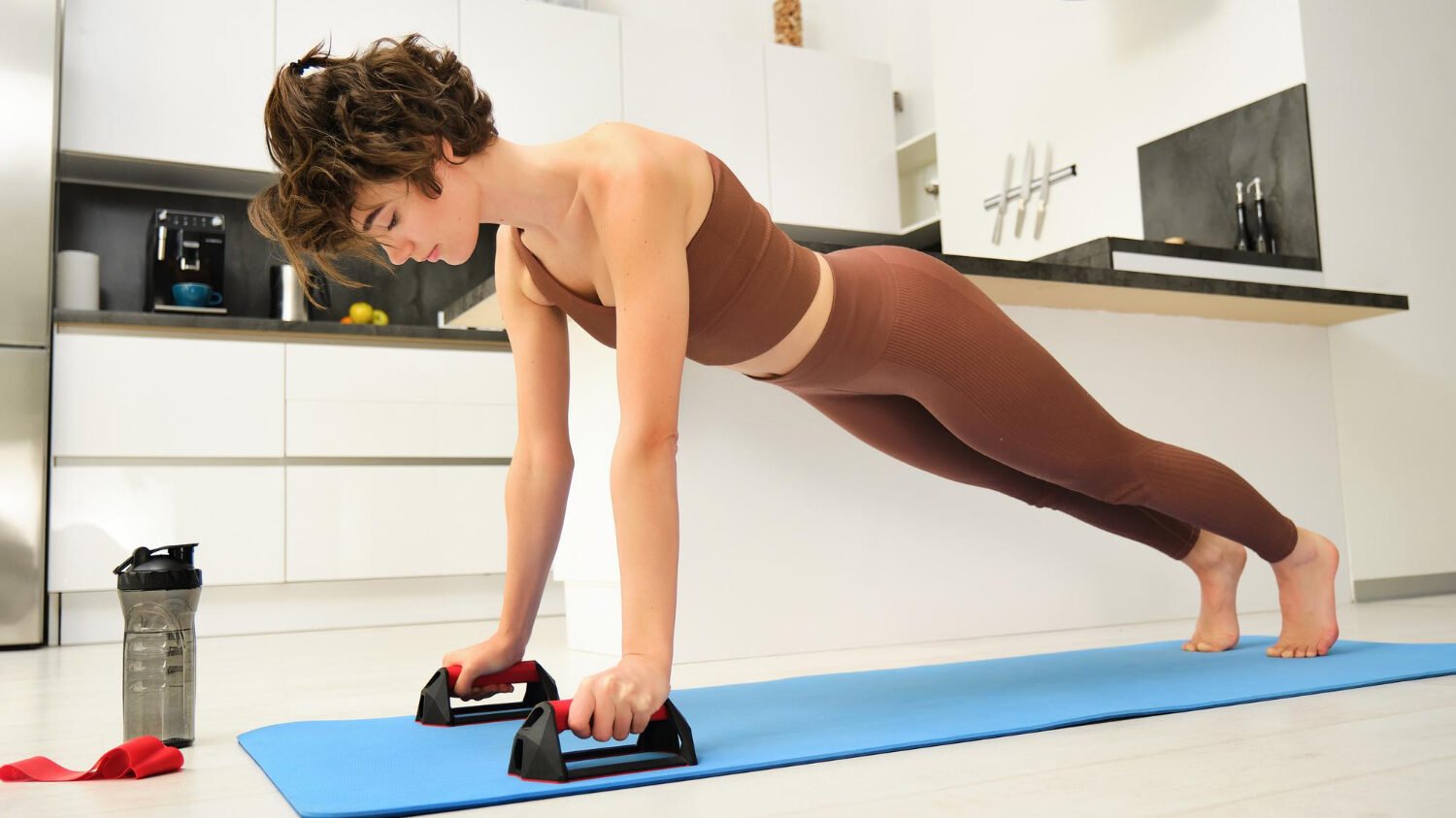
Start your push-up journey with a one month program designed specifically for beginners. Each day focuses on different aspects of strength and technique to help you build up the endurance and form needed for a solid push-up workout routine.
Day 1: Push-Up Volume Accumulation
On Day 1 of the push-up program for beginners, focus on increasing your push-up volume. Start with a manageable number of repetitions and aim to complete multiple sets throughout the day.
Gradually increase the number of sets and reps as you progress, building both strength and endurance in your chest, shoulders, and triceps.
Engage in regular sessions spread out across the day to accumulate volume without exhausting yourself. Keep proper form and control with each repetition to maximize the benefits of this workout routine for beginners, promoting muscle growth and overall upper body strength.
Day 2: Lockout and Triceps Strength
Day 2 focuses on enhancing lockout and triceps strength, critical for completing the full range of motion in a push-up. Begin with close-grip bench presses to specifically target the triceps.
Utilize a chair or bench to achieve correct form while performing this exercise. Next, incorporate skull crushers, another effective movement for building triceps strength. Finish day 2 with diamond push-ups, which provide an additional emphasis on the triceps and chest muscles.
Planned properly and executed consistently, Day 2 will contribute significantly to overall progress in mastering push-ups as a beginner. The focus on lockout and triceps strength forms an essential part of your journey toward executing proficient push-ups.
Day 3: Pec and Deltoid Strength
Transitioning from strengthening the triceps and lockout in Day 2, Day 3 focuses on developing pecs and deltoids. Targeting these muscle groups enhances upper body strength and stability essential for mastering push-ups.
Begin with chest-focused exercises such as dumbbell presses, chest flyes, or push-up variations that emphasize the pectoral muscles. Incorporate shoulder-focused moves like lateral raises or overhead presses to build deltoid strength for better control during push-ups.
Engage in a variety of exercises that challenge your chest and shoulder muscles to increase overall upper body strength. By targeting the pecs and deltoids on Day 3, you’re building a solid foundation for achieving proper push-up form and technique while progressing through the one-month program.
Push-Up Modifications & Progressions
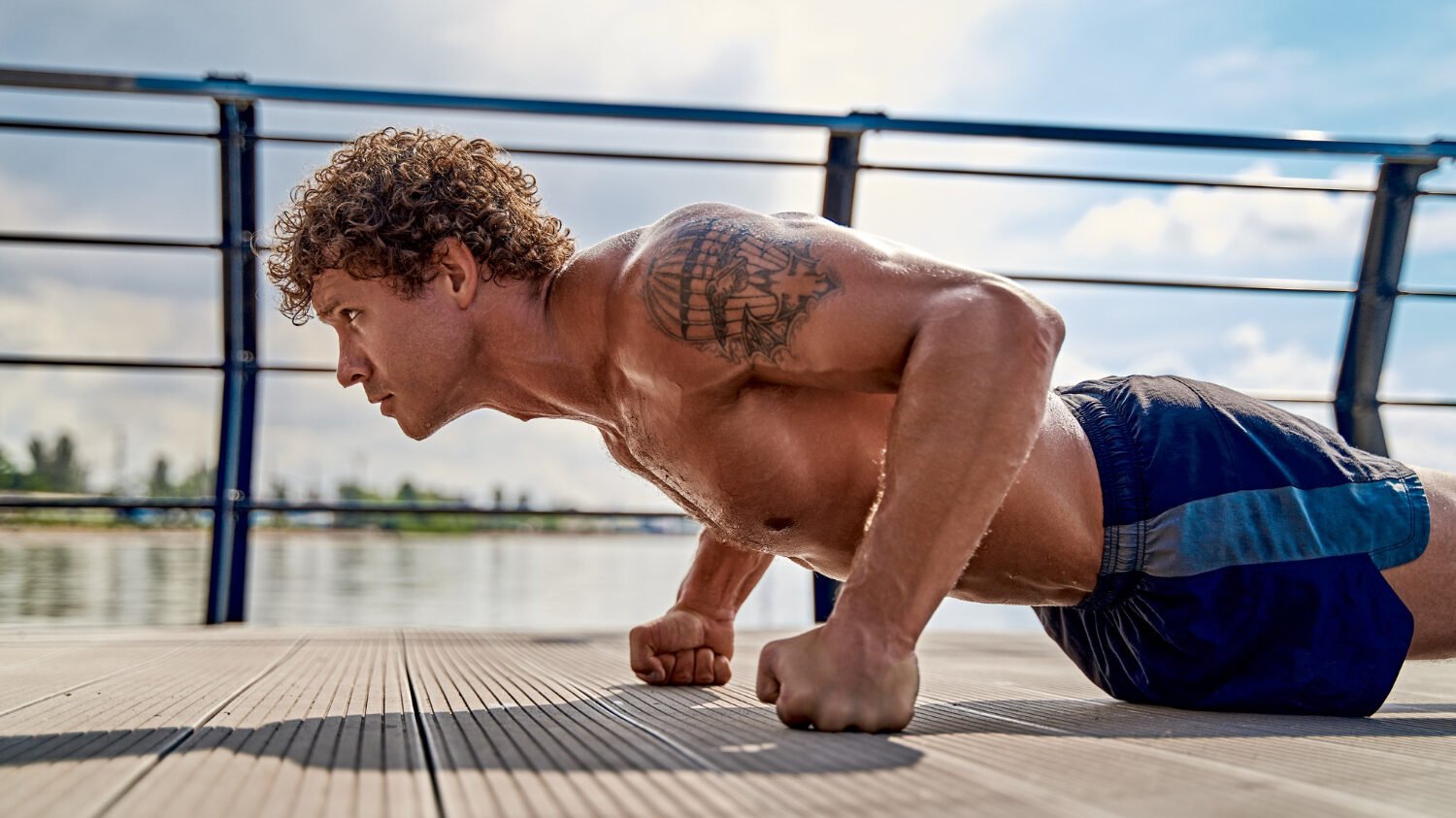
Explore different variations and progressions of push-ups to continually challenge yourself and build strength – whether you’re a beginner or more advanced. Read on for more tips and techniques to master the push-up workout.
1. Kneeling Push-Up
To perform a Kneeling Push-Up, start in a kneeling position with hands on the floor slightly wider than shoulder-width apart. Slowly lower your chest towards the ground while keeping your body in a straight line from head to knees.
Then, push back up to the starting position by extending your arms. This modified version of the push-up is ideal for beginners as it reduces the amount of body weight being lifted and allows you to focus on proper form and building strength in the upper body.
Progressing from Kneeling Push-Ups to traditional push-ups can help you gradually increase upper body strength and prepare you for more challenging variations. Incorporate this modification into your workout routine, aiming for gradual improvement over time in order to build muscle and endurance effectively.
2. Kneeling Push-Up Row
To perform the kneeling push-up row, start in a kneeling position with hands on dumbbells. Position your hands directly under your shoulders. Engage your core and keep your body in a straight line from head to knees.
Lower yourself toward the ground by bending at the elbows while keeping them close to your body. Push back up to the starting position and then bend one arm, pulling the dumbbell up towards your ribcage while keeping your elbow close to your side.
Lower it back down and repeat with the other arm.
3. Hand Release Push-Up
To perform a hand release push-up, start in a standard push-up position with your hands slightly wider than shoulder-width apart. Lower your body down until your chest touches the ground.
Lift your hands off the ground briefly, then place them back down and push yourself back up to the starting position. Focus on engaging your core and keeping a straight line from head to heels throughout the movement.
Hand release push-ups are an excellent way to build strength and improve muscle endurance, especially for beginners. They help ensure that you’re performing each push-up with proper form while also engaging key muscles in your chest, shoulders, triceps, and core.
Incorporate hand release push-ups into your workout routine to see progress in no time!
4. Explosive Push-Up
After mastering the hand release push-up, you can progress to the explosive push-up. This advanced variation focuses on generating power and building upper body strength. To perform, start in a high plank position with your hands slightly wider than shoulder-width apart.
Lower your chest toward the ground, then explode upward with enough force for your hands to leave the ground. Land softly and immediately lower back into another rep.
Explosive push-ups engage fast-twitch muscle fibers and improve explosive strength. They also increase core stability and coordination while enhancing overall athletic performance.
5. Lay Down Push-Up
The lay-down push-up is a challenging variation that targets your chest, shoulders, and triceps. Begin in a traditional push-up position and then lower your body entirely to the ground.
Pressing into the floor, lift yourself back up to the starting position using only your upper body strength. This exercise helps build overall upper body strength and improves stability.
To progress with this move, focus on controlling the descent phase by lowering yourself slowly to the ground. Engage your core throughout the movement to maintain proper form and prevent sagging at the hips or lower back.
Keep breathing steadily as you perform each repetition for better endurance and performance gains.
6. Clock Push-Up
Transitioning from the Lay Down Push-Up, let’s delve into the challenging yet rewarding Clock Push-Up. This advanced variation engages multiple muscle groups, enhancing core strength and stability.
To perform this exercise, start in a traditional push-up position, then move your right hand to 1 o’clock and left hand to 11 o’clock while lowering yourself down for a push-up. Alternate sides with each repetition.
Clock Push-Ups are an excellent way to increase upper body strength, especially in the shoulders and chest. The dynamic movement also enhances coordination and balance. By incorporating Clock Push-Ups into your routine, you can take your push-up workout to the next level and continue progressing in both strength and skill.
7. Cobra Push-Up
Transitioning from the intensive Clock Push-Up, the Cobra Push-Up is a challenging variation that targets the upper body muscles. To perform this exercise, start by lying face down on the floor with your hands positioned directly under your shoulders.
Engage your core and press through your palms to lift your chest off the ground while keeping your hips in contact with the floor. This movement strengthens not only the arms and chest but also engages the lower back muscles for stability.
Mastering the Cobra Push-Up requires control and strength as you lower yourself back to starting position without collapsing onto the ground. Remember to maintain a straight back throughout this exercise and focus on controlled movements for optimal results in building upper body strength.
8. Rotational Push-Up
After mastering the Cobra Push-Up, you can challenge yourself with the Rotational Push-Up. This variation adds a dynamic twist to your workout by requiring you to rotate and lift one arm towards the ceiling after each push-up.
Begin in a standard push-up position, then as you push up, rotate your body and extend one arm upward while keeping your balance. This movement engages not only your chest, triceps, and shoulders but also activates your core and oblique muscles as you twist from side to side.
As part of a beginner’s routine, incorporating the Rotational Push-Up can help improve overall strength and stability while adding an element of fun and complexity to traditional push-ups.
Tips for Mastering the Push-Up
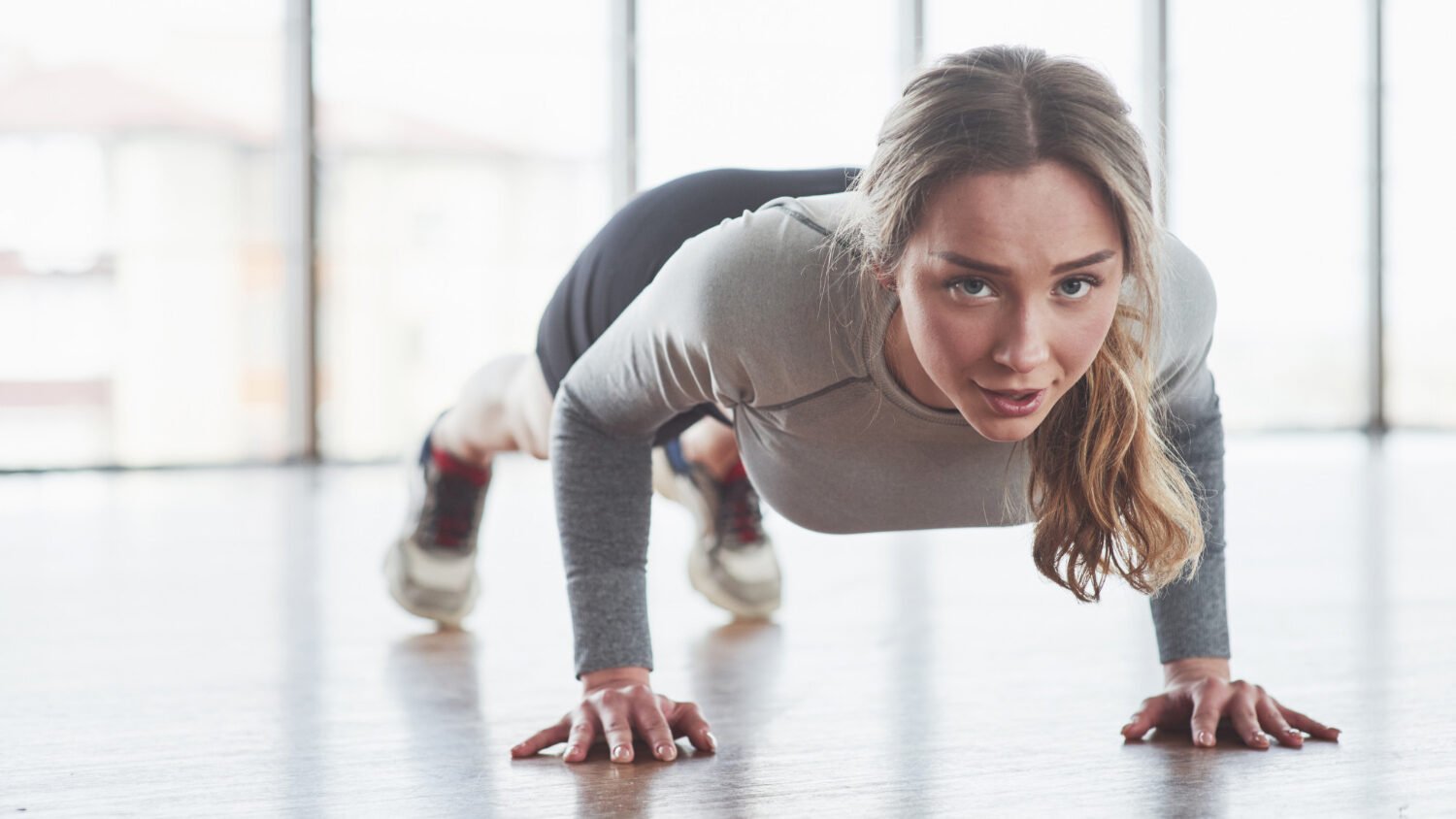
Ensure proper body alignment, hand positioning, and control of breathing to maximize the effectiveness of your push-up workout. To learn more about mastering the push-up, check out our beginner push up workout video and start your journey toward fitness success today!
Proper body alignment
Maintaining proper body alignment is crucial when performing push-ups. Start by positioning your hands slightly wider than shoulder-width apart and directly below your shoulders. Engage your core muscles by keeping your body in a straight line from head to heels, avoiding any sagging or piking of the hips.
Throughout the exercise, focus on keeping your head in a neutral position with eyes looking slightly forward to maintain spinal alignment.
To ensure that you are maintaining proper body alignment during push-ups, concentrate on engaging the muscles of the chest, shoulders, and triceps while lowering and raising your body as one unit.
Hand positioning
Place your hands slightly wider than shoulder-width apart, with fingers pointing forward or slightly turned inward to engage the chest muscles. Keep your wrists in line with your shoulders and elbows, maintaining a straight line from your head to heels.
Engage your core by tightening your abs and glutes as you lower yourself down.
During the push-up motion, focus on pushing through the palms of your hands while keeping them firmly pressed into the ground. This will help distribute the weight evenly across both sides and prevent straining specific muscle groups.
Remember to breathe out as you push up and breathe in as you lower down to maintain control throughout the exercise. Developing proper hand positioning is crucial for executing a successful push-up routine.
Control and breathing
To maximize the effectiveness of your push-up workout, focus on maintaining control and breathing throughout each repetition. Engage your core muscles to stabilize your body as you lower yourself down and exhale during the exertion phase of the push-up.
Controlled movements not only improve muscle engagement but also reduce the risk of injury. By breathing rhythmically, you can sustain energy levels and stay focused during your entire push-up routine.
Practice controlled breathing with each push-up repetition to enhance endurance and keep yourself centered, ensuring optimal performance throughout every set. Maintaining control over each movement will aid in building strength effectively while minimizing strain on your muscles and joints.
Conclusion
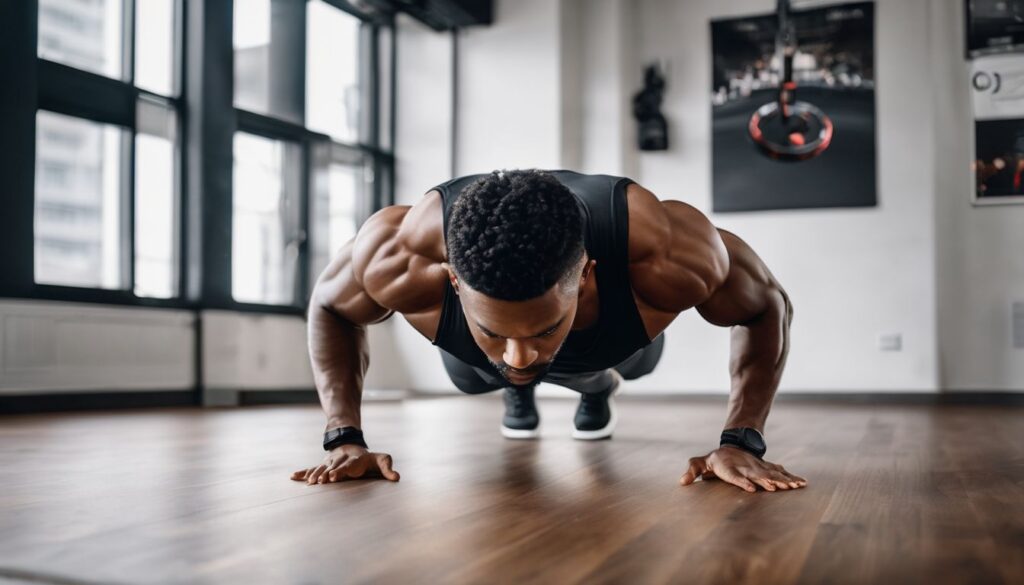
In conclusion, mastering the push-up workout for beginners involves understanding the basics and following a structured program. Emphasize practicality and efficiency by incorporating push-up modifications and progressions to gradually build strength.
The importance of proper body alignment, hand positioning, and control cannot be overstated. This approach can lead to significant improvements in both physical strength and overall fitness levels.
For further guidance, explore additional resources or videos to enhance your understanding of this essential exercise.
FAQs
1. What is a good push up workout for beginners to start with at home?
Beginners can start with a simple push up beginner workout plan, including modified push-ups to build strength before moving on to standard pushups.
2. How does a beginner do a proper push-up?
A beginner should start in the downward dog position, lower their body keeping thumbs under shoulders, and press back up to complete one rep of a basic push-up.
3. Are there different types of push-ups that beginners should try?
Yes! Beginners can add variety by trying diamond push-ups or modified versions like knee-supported push ups as they progress in their fitness journey.
4. Can following a specific routine increase effectiveness for beginners’ workouts?
Absolutely, following the best push up workout routine for beginners will guide you through step-by-step exercises that gradually build your strength and endurance.
5. Why are beginner workouts important for overall health and fitness?
Starting with entry-level exercises like the beginners’ push-up workout helps safely develop muscle, improve heart health and get comfortable with regular physical activity.

Author
Years ago, the spark of my life’s passion ignited in my mind the moment I stepped into the local gym for the first time. The inaugural bead of perspiration, the initial endeavor, the very first surge of endorphins, and a sense of pride that washed over me post-workout marked the beginning of my deep-seated interest in strength sports, fitness, and sports nutrition. This very curiosity blossomed rapidly into a profound fascination, propelling me to earn a Master’s degree in Physical Education from the Academy of Physical Education in Krakow, followed by a Sports Manager diploma from the Jagiellonian University. My journey of growth led me to gain more specialized qualifications, such as being a certified personal trainer with a focus on sports dietetics, a lifeguard, and an instructor for wellness and corrective gymnastics. Theoretical knowledge paired seamlessly with practical experience, reinforcing my belief that the transformation of individuals under my guidance was also a reflection of my personal growth. This belief holds true even today. Each day, I strive to push the boundaries and explore new realms. These realms gently elevate me to greater heights. The unique combination of passion for my field and the continuous quest for growth fuels my drive to break new ground.





